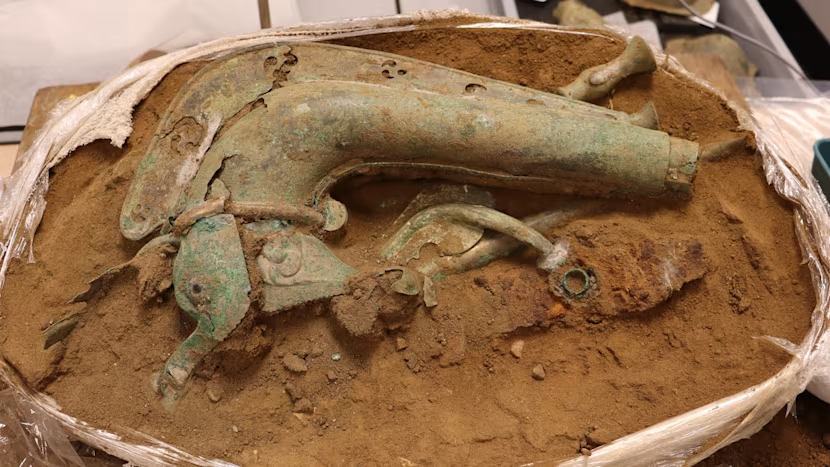The origins of the Egyptian pyramids may now be understood, according to scientists.
The pyramids have left scientists scratching their heads for centuries
A whopping 2.3 million slabs of limestone and granite, each weighing about two tonnes, make construct the Great Pyramid alone, a puzzle that has confounded historians for centuries.
Without modern tools like cranes, scholars were left perplexed as to how the prehistoric civilization was able to move and stack the gigantic slabs; some conspiracy theorists even proposed that aliens might be responsible.
Archaeologists from around the world now think they may have found the solution and that the Egyptians may have exploited a River Nile tributary to move enormous rocks to Giza.
Some people think the pyramids were placed in Giza by aliens
The scientists searched for evidence of pollen and plants typically seen surrounding Africa's longest river in a lab in France using five fossilized soil samples sent from the Giza floodplain.
Scientists had to dig up to nine meters into the ground to retrieve the samples, which was a laborious operation.
The Khufu Branch, a channel off the river that allowed the ancient builders to move the slabs, was eventually confirmed to exist, proving that their efforts were worthwhile.
An engraving of ancient Egyptians building one of the pyramids
“I was quite fascinated because this proves that the building components for the pyramid were transported through water”, environmental geographer Hader Sheisha told the New York Times.
She continued that without the tributary, it would have been "impossible" to construct the spectacular ancient structures.
Approximately 2,000 years after the construction of the pyramids, the Khufu Branch dried up approximately 600 BC.
Sheisha believes that despite being long gone, this discovery may inspire researchers to learn more about the ancient Egyptians.
The construction of the pyramids can be partially explained by learning more about the surroundings, she continued.
Even a fragment of papyrus discovered in the adjacent Red Sea served as inspiration for the discovery.
An engraving of ancient Egyptians building one of the pyramids
The antiquated text described how one official, known as "Merer," sent limestone up the Nile to Giza.
The three pyramids of Giza were built as grandiose tombs for the Egyptian pharaohs between around 2550 and 2490 BC.
Pharaoh Khufu, who ruled during the Fourth Dynasty of the Old Kingdom, is buried in the Great Pyramid, the tallest pyramid in Egypt, while his son Khafre and his grandson Menkaure are interred in the other two significant pyramids.
For the monarchs' mothers and wives, smaller buildings were built.









